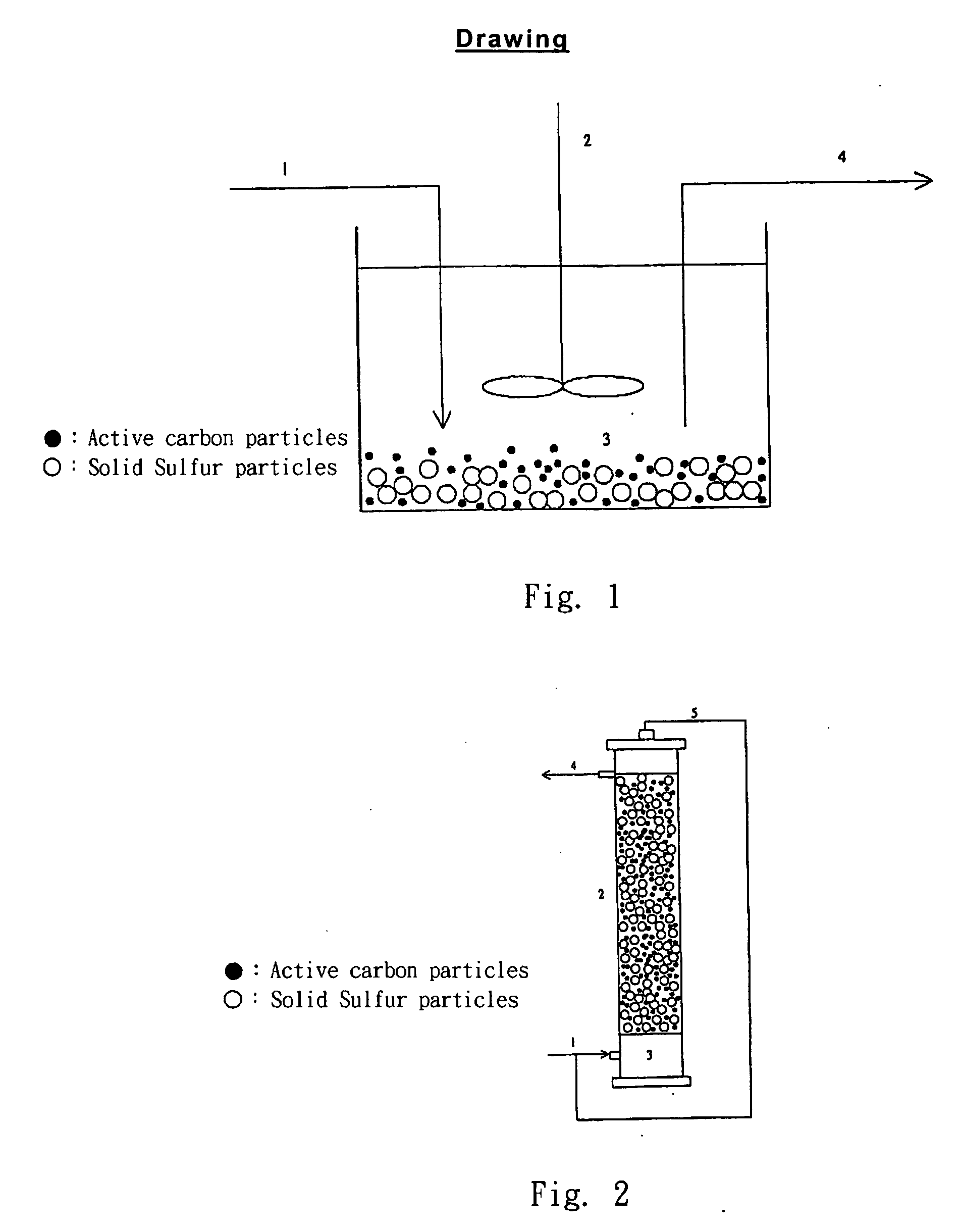Closed sulfur circulation system
a closed sulfur and wastewater treatment technology, applied in the direction of liquid degasification, separation process, filtration separation, etc., can solve the problems of shortening the use life of the facility, inability to drink, unavoidably producing a large amount of sulfates, etc., to reduce sulfate by-products, reduce sulfate by-products, and reduce sulfate by-products
- Summary
- Abstract
- Description
- Claims
- Application Information
AI Technical Summary
Benefits of technology
Problems solved by technology
Method used
Image
Examples
example
[0048] The following shows the examples of the present invention, however, the present invention is not limited thereto.
ExamDle 1
Cultivation
[0049] To a 1 liter reaction vessel equipped with agitator, 800 ml of liquid, 320 ml of sulfur and proper amount of culture medium A introduced. In the first stage, wastewater 170 ml per day was semi-continuously batched, and 40, 80, 120, and 160 ml of active carbon were introduced respectively. The cultivation of culture was conducted in anaerobic condition of temperature of 30° C. and hydraulic retention time (HRT) of 7.5 days. The qualities of the influent and effluent water were determined, and the amount variation of the hydrogen sulfide produced by the cultivated sulfur autotrophic microorganism and heterotrophic microorganism on the active carbon was observed.
PUM
| Property | Measurement | Unit |
|---|---|---|
| operating temperature | aaaaa | aaaaa |
| operating temperature | aaaaa | aaaaa |
| size | aaaaa | aaaaa |
Abstract
Description
Claims
Application Information
 Login to view more
Login to view more - R&D Engineer
- R&D Manager
- IP Professional
- Industry Leading Data Capabilities
- Powerful AI technology
- Patent DNA Extraction
Browse by: Latest US Patents, China's latest patents, Technical Efficacy Thesaurus, Application Domain, Technology Topic.
© 2024 PatSnap. All rights reserved.Legal|Privacy policy|Modern Slavery Act Transparency Statement|Sitemap


